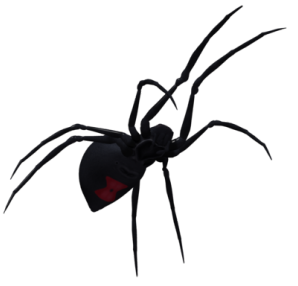Aphonopelma seemani (Costa Rican Zebra)
Country of Origin: Costa Rica
The Name:
The genus name “Aphonopelma” is derived from Greek, where “aphono” means “silent” and “pelma” means “sole of the foot,” reflecting their quiet, ground-dwelling nature. The species name “seemanni” honors the German entomologist Berthold Carl Seemann, who made significant contributions to the study of Central American flora and fauna.
Natural Environment and Behavior:
The Costa Rican Zebra Tarantula, Aphonopelma seemanni, is a species native to the tropical and subtropical regions of Costa Rica. This striking tarantula thrives in a variety of environments, including rainforests, scrublands, and savannas.
In its natural behavior, this tarantula exhibits both terrestrial and fossorial tendencies, preferring to spend a significant portion of its time on the ground and in burrows. Known for its impressive digging abilities, it creates deep, silk-lined burrows for shelter and protection. In captivity, providing an appropriate substrate that allows for burrowing is essential to replicate its natural behavior.
Although generally calm, this species can display a defensive posture and flick urticating hairs if disturbed, so caution should be exercised during handling to avoid stress.
As an opportunistic feeder, the Costa Rican Zebra preys on various small invertebrates in its native habitat. In captivity, it is typically fed live insects, such as crickets or roaches, to meet its dietary needs. Its primarily terrestrial lifestyle means it spends a considerable amount of time on the ground or in its burrows, occasionally venturing out for feeding.
To ensure the well-being of this tarantula in captivity, it is crucial to create an environment that accommodates its burrowing instincts, maintain a secure enclosure, and approach handling with care.
Longevity:
Females can live up to 20 years, while males typically live between 5 to 10 years.
Size:
They range from 12 to 15 cm in size.
Husbandry:
Maintain humidity between 65-75% and temperature between 24-28°C. Use a mixture of peat moss, vermiculite, coconut fiber, and soil for substrate firmness.
Enclosure Size:
Slings: Approximately 5-10 cm in length and width is suitable.
Juveniles: An enclosure with dimensions of approximately 15-20 cm.
Adults: Dimensions of 30x30x30 cm for sub-adults and slightly larger with 45x45x45 cm for adults.
